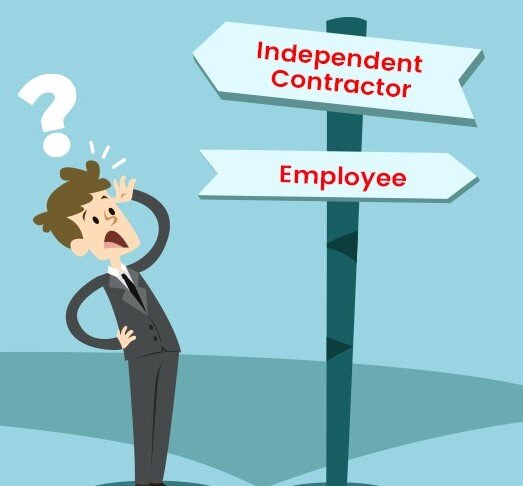
By Conor Cronin
Legal Intern
In Revenue Commissioners v Karshan (Midlands) Ltd Trading as Dominos Pizza, a landmark decision delivered by the Supreme Court in 2023, the Court examined the distinction between employees and self-employed persons. At the outset, the ‘mutuality of obligation’ was the focus, as it is one of the fundamental elements of an employment relationship. The ‘mutuality of obligation’ is essentially where an employer is obliged to offer a reasonable amount of work to an employee, and once the work is offered, it is accepted and carried out to the company’s standard. However, in this case, the ‘mutuality of obligation’ was subsided and replaced by a five-question test to determine whether one was an employee or a contractor. The five questions were as follows: –
- Does the contract involve the exchange of wages or other remuneration for work?
- If so, is the agreement one pursuant to which the worker agrees to provide their own service, and not those of a third party, to the employer?
- If so, does the employer exercise sufficient control over the worker to render the agreement one that is capable of being an employment agreement?
- If these three requirements are met, the decision make must then determine whether the terms of the contract between the employer and worker, interpreted in the light of the admissible factual matrix having regard to the working arrangements between the parties as disclosed by the evidence, are consistent with a contract of employment, or with some other form of contract having regard, in particular, to whether the arrangements point to the putative employee working for themselves or the putative employer.
- Finally, it should be determined whether there is anything in the particular legislative regime under consideration that requires the court to adjust or supplement any of the foregoing.
This case ruled in favour of the Revenue Commissioners on learning that, firstly, the delivery drivers received wages from Dominos in exchange for delivering their product. Secondly, the drivers could not send a substitute to carry out their work, which is a key feature of determining an independent contractor. Contrastingly, the driver could only substitute a fellow Domino’s employee to essentially cover their shift. Thirdly, in relation to the third question of the test which concerns the aspect of control, it became evident that the drivers would carry out work at a specific time according to weekly rosters made by Dominos Pizza. In addition, the drivers were required to assemble the pizza boxes prior to making a delivery, all of which are indicative of an employer-employee relationship. Fourthly, the court examined if the drivers were conducting business on their own account. The answer was inevitably no as delivery drivers do not take direct calls from the customer, they could not generate their own profits, and they had no financial risk. Lastly, the court referred to the key features of an agreement under common law.
In Monnie McKayed v Forbidden City Limited, it was determined that the Plaintiff was an independent contractor after he claimed that he was wrongfully dismissed under the Unfair Dismissals Act, 1977. The Plaintiff worked as a translator and provided his services at police stations and court rooms. The Plaintiff received most of his work through the Respondent. However, he was not prohibited from working with another company. He also issued invoices on completion of his services, which is a practice of one who is self-employed. The Court held that there was no mutuality of obligation.
Code of Practice
Notwithstanding the above, further clarity has been provided by the Code of Practice on determining employment status, which was published by the Department of Social Protection, Revenue, and Workplace Relations Commission. The Code contains information and clarity in relation to the status of one’s employment. For example, typical characteristics of an employee include a fixed wage and set of hours given on a weekly or monthly basis, tax deductions through the PAYE system, no financial risk, and restrictions on subcontracting work.
Contrastingly, the characteristics of self-employment would include one who assumes responsibility for the management of the Company, has control over how and what work is done, is registered for self-assessment tax returns, and is not obliged to take specific work offered to them.
If you have any queries in relation to this or any other employment law topic do not hesitate to contact Brendan Dillon or Donna Phelan on 01 2960666